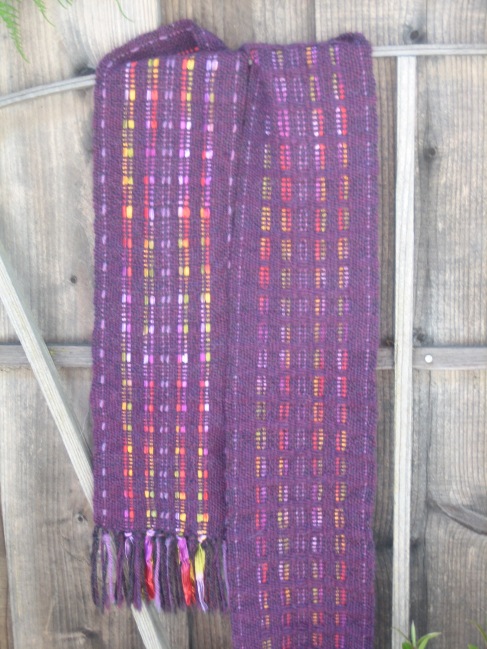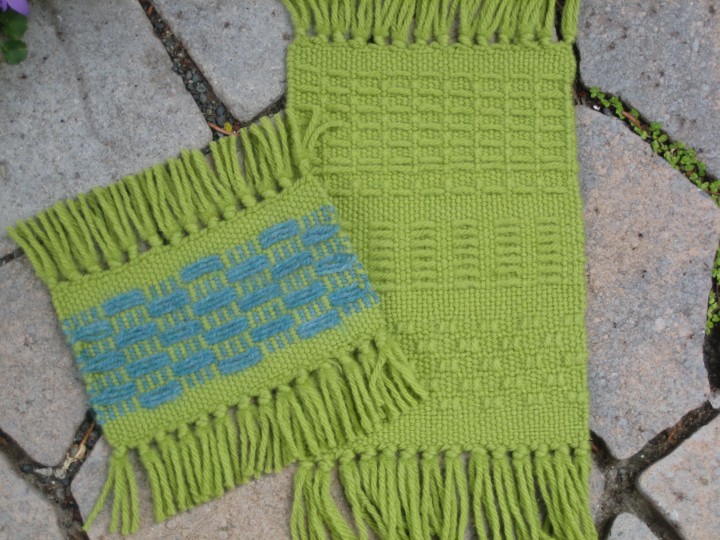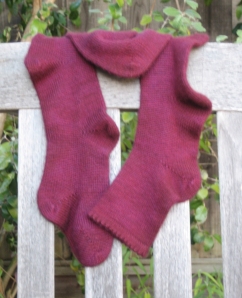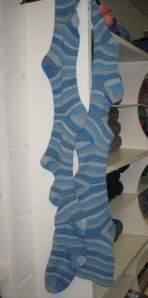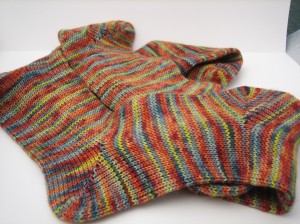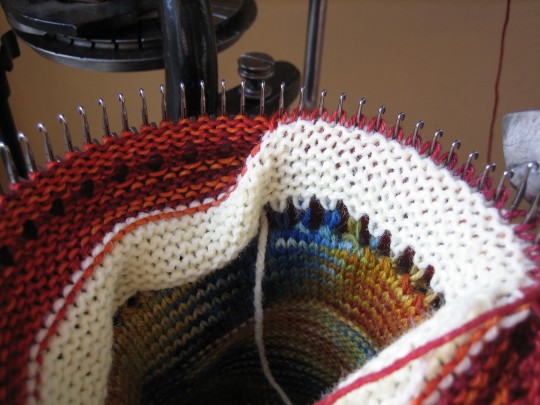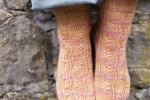With 2012 right around the corner and plans for the One Skein Club in the works I thought it would be fun to get to know the designer behind the patterns. I’ve had the pleasure of working with Jocelyn Blair, a prolific knitter and designer, over the past couple of years. Here in her own words:
Did you like crafts as a kid? What was your favorite toy?
Yes! I loved the gadgets. I learned to tat with shuttles. I adored my little plastic sewing machine. I made tons of potholders using those loops and I had a Barbie knitting machine (maybe that’s why I like sock machines so much).
How did you get started as a designer?
Well it was mostly an accident, but I suppose it really was a natural transition from knitting other designs. I was always intrigued at how things came together. I have quite a collection of stitch pattern books and always want to try some stitch patterns out on socks. Socks are the most satisfying things to try out stitch patterns. I love knitting socks!
Do you do other crafts/arts besides knitting?
I can sew, my Mom was a seamstress so I learned that first. I’ve made some quilts and I’ve done embroidery, I still have a sampler to complete from when I first got married! I learned to spin and weave after I learned to knit. And then there’s the sock and flatbed machines.
Are you ever surprised at what you are doing now?
I’m always surprise at what I’m doing! Especially when I actually finish a project!
Do you have a favorite pattern/design? Why is it your favorite? What is your favorite item to design?
The last one, which was Mesquite Flat, but it’s always the most recent. My most favorite item to design would probably be socks, but a close second is triangle shawlettes – I want to do more of those!!!
What is your approach to design? What comes first: pattern stitch, idea of an item,…?
A theme. I find you have to limit your stimulus. Kinda like having a big box of crayons, if you have too many options it’s harder to settle on something. For the club I usually wait until I know the yarn, the color and the destination. For the 2012 club I’ll have to decide the item first and that’s going to depend a lot on the yarn itself.
What is your biggest challenge?
Once I have the item then I try to find a pattern stitch – that’s the hardest part I think. For socks it’s a matter of working the stitch into the sock. The same is true for non-sock patterns as well. But some things will be more important than others . Repeatability is very important for socks both in row count and stitch count. For cowls, scarves and shawls you have to figure in the shape and which way the pattern will repeat.
What is next for you and your work?
Handwerks 2012 One Skein Yarn Travel Club!
Do you have any advice for new designers?
Go for it. You’ll be amazed at what you can come up with. It really helps you become a better knitter and observer of all things.
Where can we find more of your designs and hear about what you do?
Ravelry is the best place to find all my designs. My RavID is “fiberdev” you can also get to my blog from my profile.



